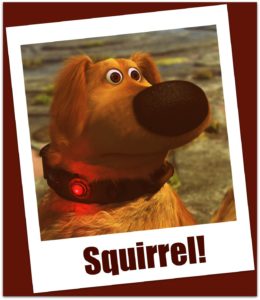While attending a live session for 541 earlier this week, Brandon Rochon made a statement that intrigued me. He said, “you have seven seconds to grab someone’s attention.”
While Brandon recited this profound statement, all I could think about was a previous boss who openly admitted he had a short attention span, and how my youngest son struggles to stay focused.
This started my journey to understand how professionals in marketing will have to alter the way they connect to short-attention span consumers.
An article in Marketing News, describes how behavioral economics play into the quick-thinking, short-attention consumers through a theory Richard Thaler calls the “Nudge” (Conick, 2018).
One of the best examples to help you related to this theory is when you are grocery shopping. How many times have items ended up in your shopping cart, which you had not planned to buy or even knew much about, they just looked appealing. Around half of the items in your cart are there because of behavioral economics (Conick, 2018).
Another example, which I found extremely humorous living in a house with three boys, was a study conducted in the Amsterdam Schiphol Airport. Thaler and a legal scholar Cass Sunstein wanted to see if they could alter people’s behavior without interfering with their economic incentives. They placed a decal of a small fly in a urinal at Amsterdam’s Schiphol Airport. The fly decal improved the “aim” of the men who visited the urinal – so much that the airport reported an 80% in men’s restroom spillage after the fly decal was installed in all the urinals (Conick, 2018).
As marketers you need to understand and know the following behavioral economic terms to create successful marketing tactics:
Nudge: “Any aspect of the choice architecture that alters people’s behavior in a predictable way without forbidding any options or significantly changing their economic incentives,” according to Thaler and Sunstein in the book, Nudge.
Choice Architecture: The space – physical, social, psychological – that influence choices people make.
Anchoring: A cognitive bias. People typically rely too heavily on the first piece of information they’re given when making a decision (they are anchored to it).
System 1: The faster, intuitive way of thinking and making choices. An example of this is 2+2 = 4 or the grass is green.
System 2: The slower, rational way of thinking and making choices. An example of this is 142×431=61,202 or hypoestes phyllostachya is pink and green. If you’re like me you had to know what this plant looked like.
Prospect Theory: A theory that describes how people choose between risks where outcome probabilities are unknown.
Conceptual Priming: Using words, images and their meanings to influence a person’s mood or performance on a task.
Framing: How a choice is presented, which may affect how a choice is made.
Heuristic: A cognitive shortcut to simplify a decision. In other words, substituting a difficult question with an easier one, meaning heuristics often lead to cognitive biases.
If this topic is of interest to you, here is a link to the 2008 book Nudge.
References
Conick, H (2018, January). Read this story to learn how behavioral economics can improve marketing. Marketing News, 52(1), 32-41.


3 Responses to You have seconds to grab their attention